https://www.youtube.com/watch?v=bCKiX-vZif4
How Car Windows Are Tinted _ Insider Cars
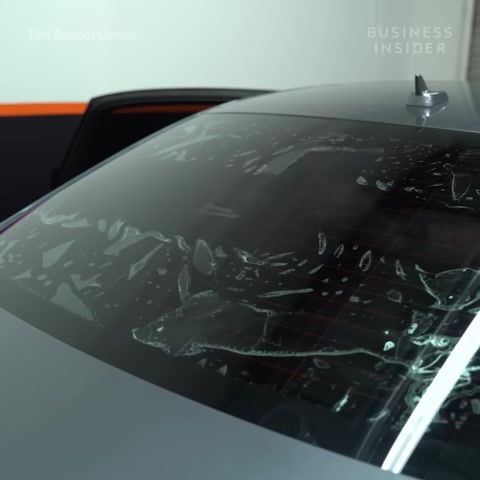
Car windows are tinted for a variety of reasons like privacy style safety or U V protection .
While some people install their own tint at home , others prefer a more professional touch .
That's where pros like Elliott Baker , the founder of Tint School online come in .
This is his process for tinting windows .
The first step is to roughly cut the tinted film down to size .
Elliott starts by spraying soapy water onto the window before cutting the film and sticking it on top .
The soapy water allows the film to glide across the window .
So Elliott can position the film as needed .
He adjusts it so the bottom edge hangs about a half inch below the window .
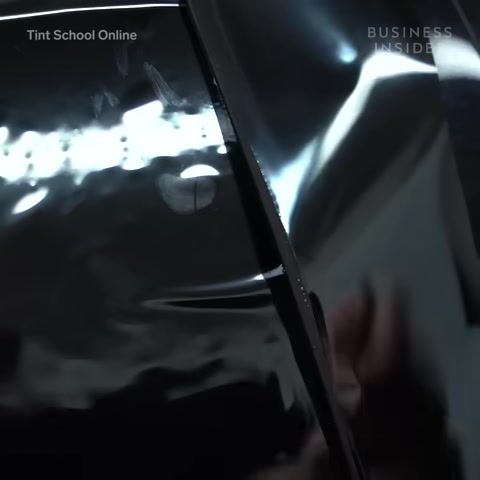
He'll tuck this underneath the window sill later , Elliott cuts along the side of the film using a stainless steel blade to prevent scratching .
Then he slides it to overlap the window by about one centimeter .
Next , he cuts the opposite side of the film and slides it back over to properly fit on the window with the window rolled down .
He cuts along the top edge , it removes the Aces film to make sure the film is .
Snug .
Elliott uses a heat gun and a squeegee to shrink the film down to the proper size .
Then he removes it from the window and places it on a peel board where he cuts the loose edges .
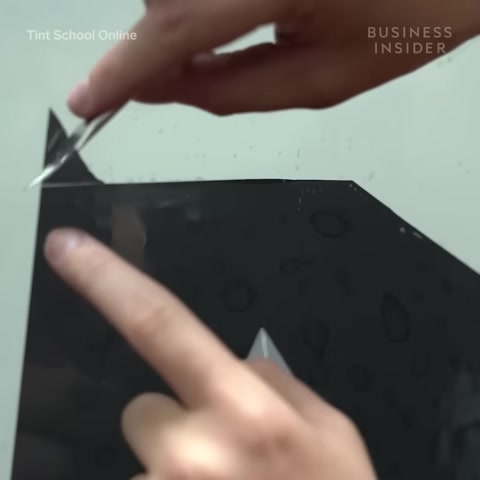
Since the film will be installed on the interior window .
Elliott preps it by cleaning the glass and removing any contaminants that may cause imperfections in the tint .
Here , you can see him using a razor blade to lift any stubborn particles stuck to the surface .
Once the window is clean and dried off , Elliott sprays it with soapy water .
Once again , he removes the film backing and douses it in soapy water before removing it from the peel board .
He first slides the film down into the window sill allowing only the bottom half to touch the window .
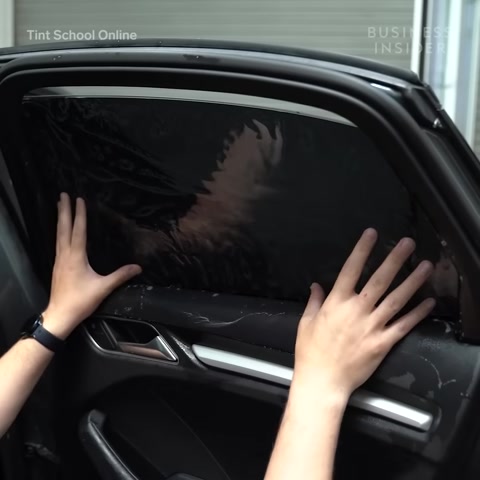
Once the bottom half is in place , the rest of the film meets the glass and Elliott carefully moves it around until it perfectly covers the window leaving a slight gap at the top .
A standard practice , he carefully squeezes the soapy water out of the film , anchoring it to the window .
Most cars have drains in the doors which prevent the water from damaging any internal electronics .
Elliott repeats these steps on the opposite window .
The rear window follows a similar process , but because of the curve in the glass , the window tint requires more shrinking at the top and bottom to properly fit before it can be installed with the film cut the size on the rear window fingers or these long bubbles indicate where there is more film than window shrinking .
The film is a balancing act , too much heat and you damage the film not enough heat and the film won't shrink .
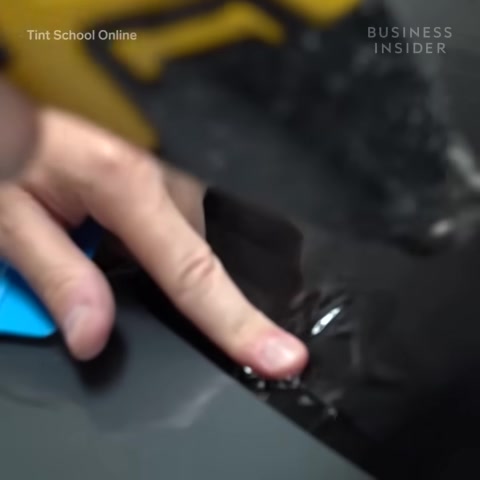
After Elliott hits the fingers with the heat gun , he uses a squeegee to carefully remove the air trapped underneath .
Once the film is shrunk down to size , Elliott installs it on the interior of the rear window using the same technique as earlier dousing it with soapy water , removing the back and squeezing out the soap water to anchor the film to the window .
And now the tint job is complete .
Are you looking for a way to reach a wider audience and get more views on your videos?
Our innovative video to text transcribing service can help you do just that.
We provide accurate transcriptions of your videos along with visual content that will help you attract new viewers and keep them engaged. Plus, our data analytics and ad campaign tools can help you monetize your content and maximize your revenue.
Let's partner up and take your video content to the next level!
Contact us today to learn more.